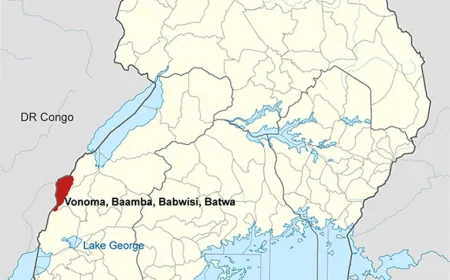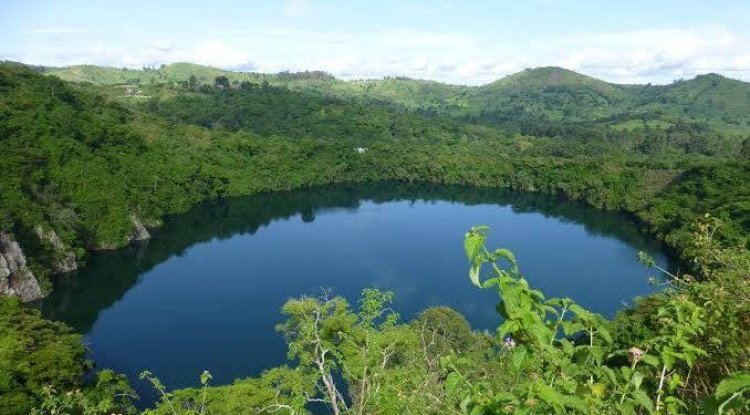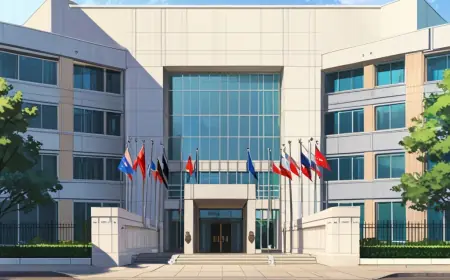Uganda's UNESCO World Heritage Sites to Visit in 2023
The Ugandan World Heritage Sites are listed below. For UNESCO to recognise a location as a World Heritage Site, it must have exceptional cultural or physical value. This list should urge you to travel and view some of these stunning features in Uganda for yourself.
locations in Uganda that have been designated as World Heritage Sites by UNESCO
Former British Prime Minister Sir Winston Churchill was so impressed by his visit to Uganda in East Africa that he dubbed the country the "Pearl of Africa."
In 1908, Mr. Churchill authored a book entitled “My African Journey” about his travels to Uganda in 1907, noting, “For beauty, for variety of shape and colour, for abundance of brilliant life—bird, insect, reptile, and beast—for gigantic scale, Uganda is certainly the Pearl of Africa."
Since then, many people and organisations have said that Uganda is one of the most beautiful countries in the world.
The Ugandan World Heritage Sites are listed below. For UNESCO to recognise a location as a World Heritage Site, it must have exceptional cultural or physical value.
This list should urge you to travel and view some of these stunning features in Uganda for yourself.

First, there's the Bwindi Impenetrable Forest.
While the mountain gorillas and gorilla tracking have made Bwindi Impenetrable Forest National Park famous, the park also has some of the best montane forest birding in all of Africa, making it an essential stop for any birder on a safari through Uganda.
About 347 species of forest birds live in the park. This includes at least 70 of the 78 species of montane forest birds in the Albertine Rift region and 22 of the 36 endemic species in the region.
Bwindi National Park is in the south-western part of Uganda, where the plain and mountain forests meet. It covers 32,000 acres and is known for its rich biodiversity, with more than 160 types of trees and more than 100 types of ferns.
Due to its varied habitats from 1,160 to 2,706 m in altitude, location at the intersection of the Albertine, Congo Basin, and Eastern Africa ecological zones, and likely role as a Pleistocene refugee, Bwindi has the highest diversity of tree species (over 200 species, including 10 endemics) and ferns (about 104 species) in East Africa. It may also be the most important forest in Africa for montane forest butterflies, with 202 species (84% of
It also has a lot of different kinds of rare butterflies and one of the most diverse groups of mammals in Africa.
Western Uganda, Rwanda, Burundi, and the eastern part of the Democratic Republic of the Congo are all thought to have been covered by a much larger forest, of which this is a relic (DRC).
Bwindi is an important place for conservation because it is home to nearly half (340) of the world's mountain gorillas. It is also surrounded by farmland with one of the highest rural population densities in equatorial Africa. Mountain gorillas and other ecotourism activities may be the only way to protect the area for future generations.
The mountain gorilla, chimpanzee, l'Hoest's monkey, and African elephant are just a few of the well-known mammals that call Bwindi home. A lot of birds and butterflies, like the African green broadbill, Grauer's swamp warbler, Turner's eremomela, Chapin's flycatcher, and Shelley's crimson-wing, find refuge in the park.
The Rwenzori Mountains National park
Rwenzori Mountains National Park, which is nearly 100,000 acres (ha) in size, is located in western Uganda and protects the bulk of the Rwenzori mountain group, which includes Africa's third-highest peak (Mount Margherita) at 5109 metres above sea level.
Spectacular snow-capped mountains, glaciers, and V-shaped valleys, fast-moving rivers with breathtaking waterfalls, crystal-blue lakes, and rare plants all add to the area's stunning natural beauty.
The wide range of altitude in the Highlands makes it the perfect place for plants like huge lobelias, groundsels, and enormous heathers, which are sometimes called "Africa's botanical big game."
Rwenzori Mountains National Park is adjacent to Virunga National Park in the Democratic Republic of the Congo (DRC), which is only a few kilometres from the equator. Since the Rwenzori Mountains are the highest and most reliable source of water for the River Nile, they are an important place to catch water.
Aside from being an important cultural landmark, the park is also a vital source of wild resources for the people who live nearby.
There are a lot of different kinds of animals in the Albertine Rift. Some of them only live in that area.
Plant life in the wild has been divided into five zones based on height and orientation. At elevations above 3,500 metres, where heath and Afro-alpine moorland predominate, you'll find some of the rarest plant life in all of Africa, including the elusive snow line.
There are 217 different bird species in Rwenzori Mountains National Park, and that number is likely to go up as more is learned about the park.
The African forest elephant, the eastern chimpanzee, and the L'Hoest's monkey are just a few of the endangered primates that call the montane forests home. It appears that the Rwenzori black-fronted or red duiker, a critically endangered species, is exclusive only to the park.

Kasubi, where the royal tombs of the Buganda dynasty are located.
The Tombs of Buganda Kings are a large complex that covers 26.8 hectares of the Kasubi hillside in Uganda's capital city, Kampala. The area serves as the Baganda people's primary spiritual and cultural centre. Many religious ceremonies take place in the Kasubi Tombs, making it the busiest religious site in the kingdom.
It is where the last four kings (Kabakas) were buried, which makes it a "religious focus" for the royal family and a place where important Buganda ceremonies are held by the Kabaka and his representatives. The site represents a place where communication with the spiritual realm is maintained.
The layout of the site is the best example of a Baganda palace and burial complex that has survived. The typical bark cloth trees mark the site's edge, and the gatehouse, main courtyard, and huge thatched building, which holds the tombs of the four Kabakas, are next.
At its centre on the hilltop is the main tomb edifice, colloquially referred to as the "Muzibu-sAzaala-Mpanga," which is a masterpiece of this ensemble. A tomb building has been in existence since the 13th century. In 1882, the palace of the Kabakas of Baganda was built. It was later used as a place for royal burials. Muzibu-Azaala-Mpanga is home to the tombs of four former kings.
The main tomb building is round with a dome on top; it was constructed entirely out of vegetal materials like wooden poles, spear grass, reeds, and wattle.
Its great size and beautiful decorations show how creative the Baganda were. As a marvel of form and craftsmanship, it is an outstanding example of a style of architecture that the powerful Buganda Kingdom has been making since the 13th century.
The built and natural parts of the Kasubi Tombs site are full of historical, cultural, and spiritual significance. The buildings and rituals at the site are some of the best examples of African culture and show how a living tradition can last.
The beliefs, spirituality, continuity, and identity of the Baganda people are what give the site its most important meaning. Uganda and all of East Africa look to this landmark as a symbol of their shared cultural and historical heritage.
But Uganda is more than just the places on this list; it also has timeless towns, majestic parks, and pristine landscapes all over its vast area, making for a remarkable combination of human warmth and natural splendour.
Many stunning photographs of Uganda can be found online, but nothing can compare to actually being there.
What's Your Reaction?
 Like
0
Like
0
 Dislike
0
Dislike
0
 Love
0
Love
0
 Funny
0
Funny
0
 Angry
0
Angry
0
 Sad
0
Sad
0
 Wow
0
Wow
0













































































